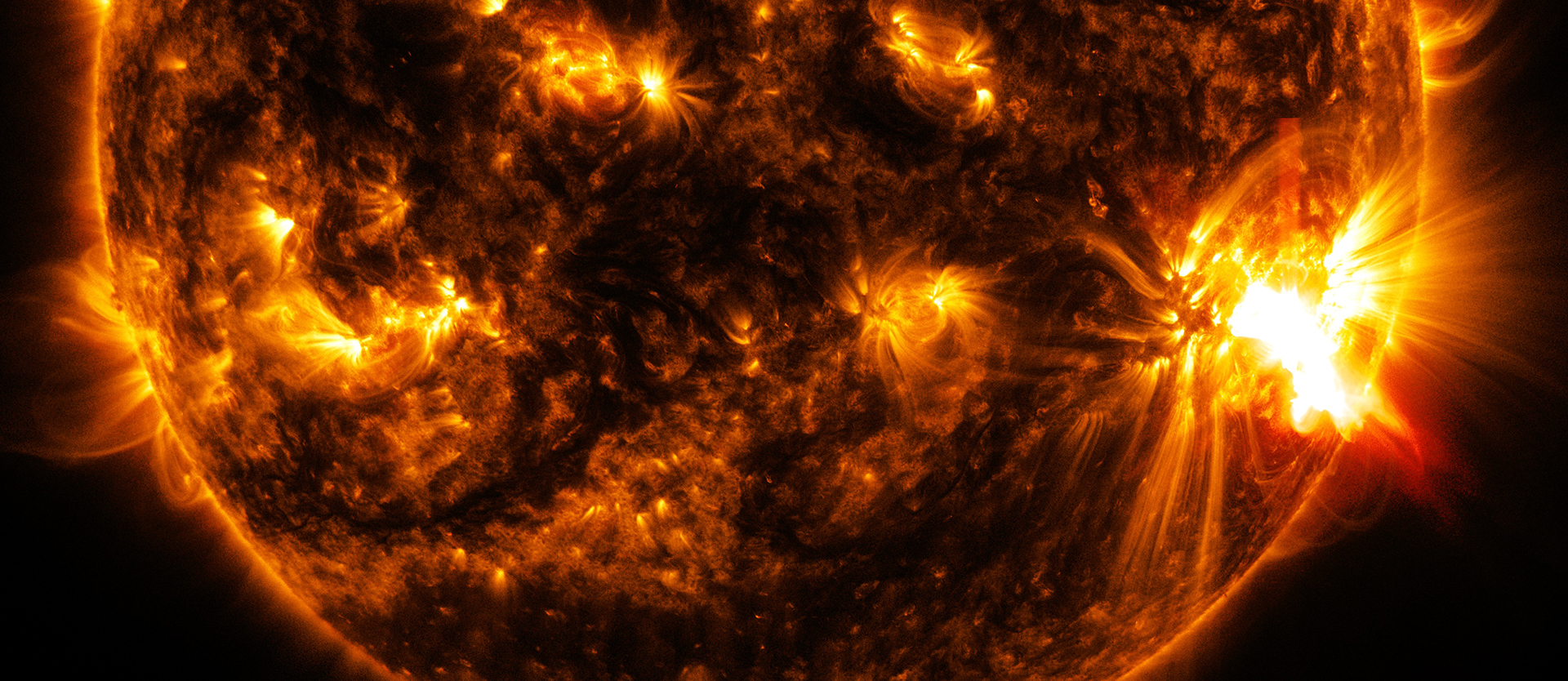Chasing ‘Tornadoes’ on the Sun’s Surface

Solar flares can lead to the ejection of massive quantities of ultrahigh-energy particles. These generally don’t harm humans — in extreme cases, however, they can damage satellites, cause power blackouts and disrupt radar and radio technologies. In 1967, a solar storm caused the US Ballistic Missile Early Warning System to malfunction, which was initially interpreted as an attack by the Soviet Union and could have triggered the outbreak of a nuclear war. Despite this phenomenon’s ability to wreak havoc, the mechanisms behind solar flares still aren’t fully understood.
US solar scientists have recently succeeded in producing a computer simulation of a solar flare’s complete lifecycle, from the build-up of energy thousands of kilometers below the Sun’s surface to the emergence of tangled magnetic field lines and explosive release of massive quantities of ultrahigh-energy particles into the Sun’s atmosphere.
The simulation was based on an artificial scenario modeled on conditions that led to solar flares in March 2014. The researchers then produced a model that created virtual solar flares based solely on these initial conditions.
Video: Mark Cheung, Lockheed Martin, und Matthias Rempel, NCAR. Computer simulation of solar flares. Violet indicates plasma with temperature below a million Kelvin. Red indicates temperatures between one and ten million Kelvin. Green means that the plasma’s temperature exceeds ten million Kelvin.
This model can now be analysed in detail. Among other things, it shows the movement of magnetic field lines up to 10,000 kilometres below the solar surface and what effects they produce over 40,000 kilometres into the Sun’s atmosphere. ‘This work allows us to provide an explanation for why flares look like the way they do, not just at a single wavelength, but in visible wavelengths, in ultraviolet and extreme ultraviolet wavelengths, and in X-rays,’ said Mark Cheung, one of the researchers at LMSAL.
By testing the model the scientists hope to determine whether it can reveal empirically adequate results. ‘The next step is to directly input observed data into the model and let it drive what's happening’, said NCAR scientist Matthias Rempel. ‘It's an important way to validate the model, and the model can also help us better understand what it is we're observing on the Sun.’
Original publication
Cheung, M. C. M., Rempel, M., Chintzoglou, G., Chen, F., Testa, P., Martínez-Sykora, J., … McIntosh, S. W. (2018). A comprehensive three-dimensional radiative magnetohydrodynamic simulation of a solar flare. Nature Astronomy. doi.org/10.1038/s41550-018-0629-3













